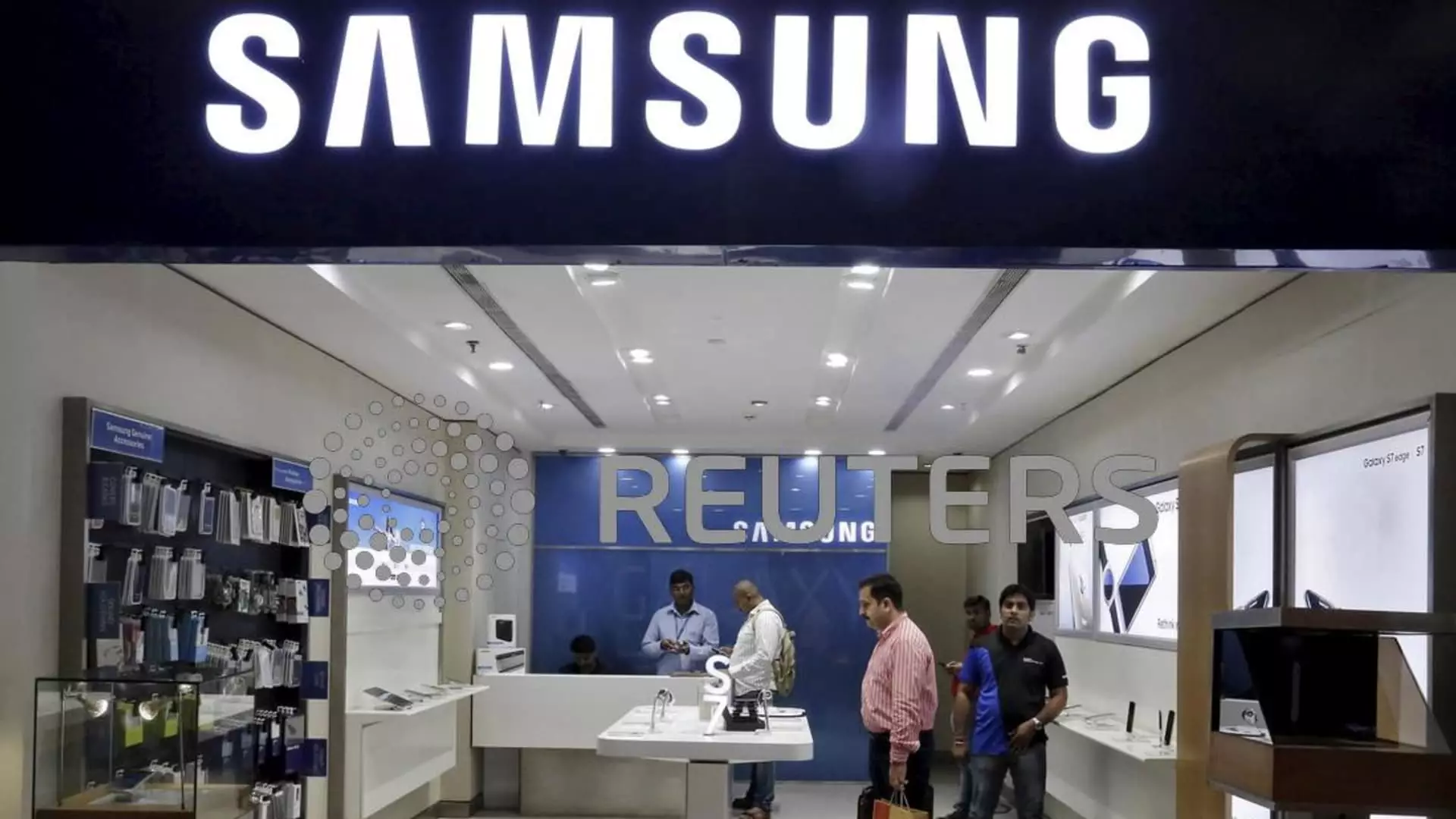Samsung Electronics unveiled its third-quarter financial results on Thursday, revealing sales that marginally exceeded the company’s own forecasts. However, the performance of its semiconductor division, a critical component of its business, told a different story. Operating profits from the chip business fell sharply, down to 3.86 trillion won (approximately $2.8 billion), marking a staggering 40% decline compared to the previous quarter. This stark contrast highlights the challenges Samsung currently faces in the semiconductor market.
Despite the robust demand for memory chips linked to artificial intelligence and conventional server products, Samsung’s semiconductor unit has been battling significant headwinds. The company attributed the decline in mobile demand to ongoing “inventory adjustments,” a euphemism for existing stock issues that have led to reduced production and eventual sales slump. Furthermore, the proliferation of legacy products in the Chinese market posed additional challenges, compounding the difficulties faced by the tech giant.
Samsung’s position as the leading manufacturer of memory chips used in laptops and servers underscores its pivotal role in the tech industry. Yet, a crucial concern remains: with the chip sector witnessing a downturn, can Samsung sustain its competitive edge in the face of rising competition? Industry experts have noted that while the demand from advanced nodes remains strong, the anticipated rebound in mobile and PC markets appears more sluggish than previously hoped.
According to the company, growth potential in the mobile and PC sectors is now expected to be delayed despite the increasing appetite for advanced chipsets driven by ongoing investments in artificial intelligence. This scenario presents a mixed bag for Samsung, as robust demand for AI-related products, particularly through its foundry unit, may not be enough to compensate for losses within its core mobile and PC chip markets.
Additionally, Samsung’s recent quarterly performance prompts questions about the broader industry implications and the financial stability of the tech giant. The guidance issued early this month projected revenue at 79 trillion won and operating profit at 9.1 trillion won, both impressively close to actual figures. However, these numbers still fell significantly short compared to analysts’ predictions of 11.456 trillion won in operating profit.
Notably, Samsung’s Vice Chairman Jun Young-hyun, now at the helm of the device solutions division, offered an unusual public apology in response to the disappointing guidance figures. Such admissions from high-ranking executives can be uncommon in corporate culture, indicating the severity of investor concerns regarding Samsung’s current and future performance.
In light of the market volatility, Samsung’s shares on the South Korean stock exchange have experienced a decline of over 24% this year. This downturn reflects broader uncertainties associated with the semiconductor sector’s rapid evolution and the shifting landscape of technology consumption amid an increasingly competitive environment.
Overall, while Samsung’s sales figures provide a glimmer of hope, the challenges ahead loom large. The company must navigate these turbulent waters adeptly to maintain its position as a frontrunner in the semiconductor and tech markets.

